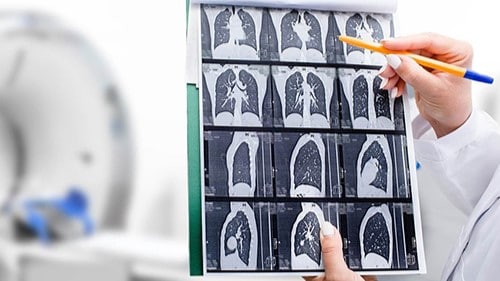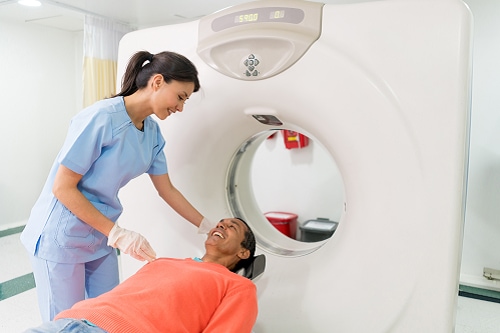At a glance
Computed tomography (CT) scans combine a series of x-ray (radiography) images into a 3D picture. CT scans require more exposure to radiation than x-rays, but they allow your healthcare provider to see more detailed images than x-rays.

The basics
CT scans are medical imaging tests that use ionizing radiation to create cross-sectional (slices) pictures inside selected areas of the body from different angles. The images from CT scans can show internal organs, blood vessels, soft tissues, and bones.
What you should know
Your healthcare provider may ask for a CT scan to detect, diagnose, or plan treatment for a particular disease or injury.
Common uses of CT scan include checking for:
- Tumors
- Infections
- Blood clots
- Internal bleeding
We all are exposed to ionizing radiation every day from the natural environment, but added exposures can increase the possibility of developing cancer later in life. Your healthcare provider will recommend a CT scan when the benefits to your health outweigh the risk.
Talk to your healthcare provider and radiologist (a medical professional that performs tests using radiation) if you have any questions or concerns to decide on the best options for you.
What to expect
Before the procedure
The radiologist will explain the procedure and ask you if you have any questions. Some CT procedures may use a contrast dye, which allows healthcare providers to see specific organ(s). You may be asked to drink the contrast dye or you may receive it in an intravenous (IV) line in the hand or arm.
Make sure to tell your healthcare provider and the radiologist doing the test if you:
- Have ever had an allergic reaction to any contrast dye.
- Are pregnant or suspect that you may be pregnant.
During the procedure
You will be asked to remove any clothing and jewelry that may interfere with the procedure. You will be asked to lie very still on a table while it moves slowly through an x-ray machine (like a tube) taking images of your body. The computer will organize the x-ray information to show the internal structures in detail.

Impacts
CT scans usually require more exposure to radiation than common x-rays because they use a series of x-ray images. Increased exposure means a slightly higher risk of possible short-term and long-term health effects.
However, CT scans provide your healthcare provider with more detailed images that can include parts of the body that may not be seen on common x-ray images. Talk to your healthcare provider to decide what type of imaging will use the least amount of radiation while providing the information and details needed for your diagnosis.
